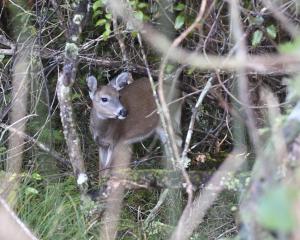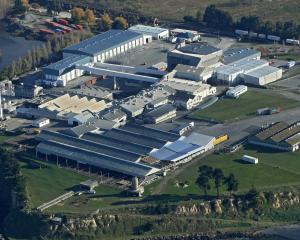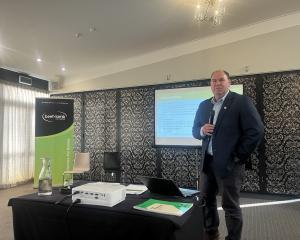
It seems to me our forebears and the many outstanding sheep breeders who created the solid foundation for this industry are witnessing it becoming fragile, hopefully not to the point of becoming destroyed or extinct.
What I detest most is the complete disrespect for people's instinct, intuition, experience and, most of all, the well-lauded term "stockmanship".
I feel we can work together to provide a useful and beneficial solution but, at this very moment, I am highly concerned over the domination of a type of recording becoming eventually compulsory, with an eventual rising cost in time and money, not to mention the obvious deterioration of the industry.
We are a member of SIL and each year send in lambing details, including the sex of the sheep. This allows SIL to determine the lambing percentage and the dam’s lambing performance during her lifetime.
We have done that before in our own derived manner. The progeny are weighed at weaning (100 day calculation) and also again at 200 days (200 day calculation).
The weaning weight reveals to me the milking and mothering ability of the dam and was initially witnessed and observed using our initiative and stockmanship.
Weighing was only undertaken once suitable scales were invented and became a bonus, confirming how well an animal performed. Therefore, it became an advantage to observe on the dam’s summary from SIL a list of weaning weights that provided instant assessment of the given dam’s performance. This is a benefit and advantage.
The same procedure is adopted by us, through SIL data of the autumn or 200-day adjusted weight which SIL has used as providing a growth factor, again partially correct. But it’s not necessarily gospel, as initially stockmanship was able to assess that element as well by determining in what shape and form that growth (weight) was formed and allocated, i.e the weight being distributed to the more desirable cuts (loin and hindquarters) versus the undesirable areas such as the brisket and particularly the shoulder.
As we know from experience, the shoulder formation has an important role to play during lambing.
In conjunction with this eye appraisal, handle and feel became absolutely imperative, as all stock agents and processing company representatives would testify.This will never not exist.
Those mentioned weights and lambing information are all SIL has to establish its so-called powerful breeding values with and they expect structural soundness to be of a certain standard.
Can I inquire how they will instruct us to achieve that or even if it is intended to be important?
What has concerned me the most is the fact actual figures — factual weights — have been deleted from the dam’s summary and the information expressed by SIL is BVs (breeding values) only.
It is disappointing this anomaly has been adopted at the Canterbury A&P Elite Ram sale, too.
The previous figures and weights were essentially all that was required for the terminal breeds, apart from additional information regarding traits such as foot scores, worm resistance, and so on.
As we are now classified dual purpose breeders of Romneys, we have discovered the wool weights now are irrelevant, as that is the only figure SIL has to assess wool on.
Colour, strength length and crimp of staple are totally essential, as is the lack of vegetable matter and even grease, and wool price is governed by the "clean wool" factor. It is very obvious that micron reveals a critical role.
This all leaves us with the obvious conclusion of how can any organisation provide judgement and an assessment of fibre if we ignore the eye appraisal-feel and instinct factor.
Many sheep breeders have included the cost and importance of eye muscle scanning, which only gives an informative guide to the meat production of the animal basically in one area, the image of the fifth chop in the loin area.
However, its accuracy is not as great as CT scanning, which is 96%-97% accurate.
While it can be construed as labour-intensive and costly, it has proven for many registered Romney breeders to be the ultimate guide in focusing on carcass conformation.
When we started CT scanning in 2010 for a Romney meat trial, we averaged a 55.33% carcass yield with a top of 61.33%.
This year, our insights, experience and benefits have delivered a huge improvement of a 68.82% average yield with a top of a massive 72% yield — thanks to the unit and service at Lincoln University.
Processing companies do not reward producers for supplying lambs with meat on the desirable cuts compared with the front end of the animal, for reasons best explained by them. Hopefully in the not too distant future it will become very important, almost desirable, as will the quality of the product.
Quality should be uppermost in our breeding and producing.
Regarding meat quality, in my view, it should firstly be directed towards where the meat is formed on the conformation of the sheep and secondly — perhaps most importantly — it involves the colour, tenderness, succulence (including intra-muscular fat) and even palatability and taste, if it can be measured.
While science is progressing on these issues, no recording organisation can accurately supply this most imperative data.
The same can be said for dealing with the structural soundness of the sheep, not to mention other aspects of the breeding exercise which I have adhered to over many years.
For more than two decades we have, without boasting, achieved no bearing consequences, no cast sheep and no foot problems.
Having said that, I am touching wood. This advancement is not totally genetically foolproof, but it is something we have worked on with, so far, success.
Incidentally, at 83-years-young, our lambing percentage with 41 ewes was 173%. We lost no ewes and, while we lost three lambs, no ewe was assisted.
This is not intended for boasting, but a fact of life which I do not attribute to SIL or BLNZ.
More to the point, it’s a result of Mother Nature supplying me with common sense, enough intelligence and intuition and above all, a lot of knowledge, particularly from fellow breeders and respected animal scientists.
On all animal species, the detailed pedigree served the animal industry sublimely, and will remain the most important component of the breeding scenario.
BLNZ and SIL should take note of that unparalleled world-wide fact.
Is the animal breeding scene venturing in the same direction as our health industry, with its 16,000 people behind desks and a shortage of doctors and nurses? The logical, common sense answer reveals you cannot exclusively breed any species sitting at a computer or behind a desk.
At 83, I could or should put my feet up and experience sand between my toes. Somehow, I still prefer mud, dust and animal excrement associated with the value and significance of trying to influence a better path for our younger brigade, which I personally hold dearly.















